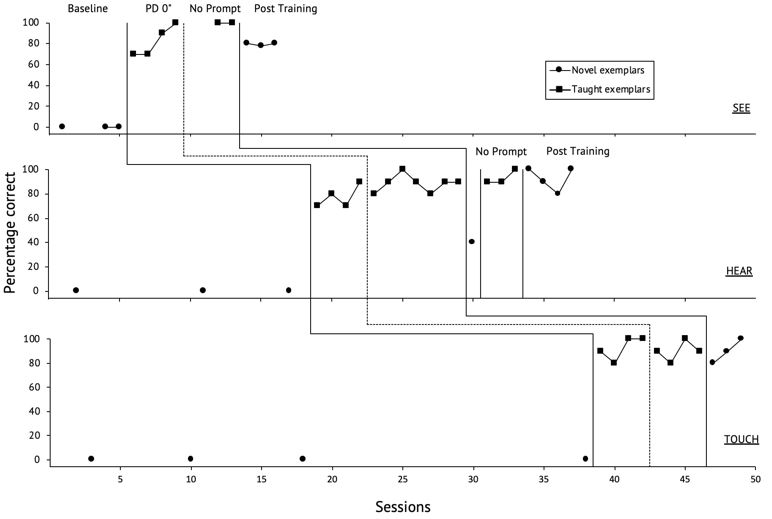Using Autoclitic Frames to Teach a Component of Perspective Taking to a Student With ASD
Daniele Rizzi, Alessandro Dibari, Lorenza D’Arcangelo, Claudia Costella, Angela Cardascia
Associazione ALBA onlus – Pescara
Introduction
The ability to take the perspective of another person involves a critical and complex set of skills (Barnes-Holmes, Barnes-Holmes, & McHugh, 2004)
Perspective taking has been behaviorally defined as observing the behaviors of another individual in a given situation and predicting the individual’s subsequent behavior or responding in relation to his private thoughts and emotions (Leblanc et al. 2003)
May involve tacting the variables that are controlling another person’s behavior and discriminating between that person’s controlling variables and one’s own (degli Espinosa, 2016)
Wrong stimulus control may be present: not discriminating between the variables controlling his behavior and variables controlling the behavior of a different person (Spradlin & Brady, 2008)
Tacting source of control of one’s own behavior may be the first component of a more complex set of skills
Methods
Participant and Setting:
1 male students: 12 years old
Level 3 on the VBMAPP (Sundberg, 2008). Established manding and tacting repertoire
Verbal utterances of more than 5 words, able to sustain more than 5 exchanges conversations.
Previously acquired different kinds of complex verbal behavior.
All data were obtained during center-based 1:1 therapy
Data Collection:
Multiple probe design across test conditions
Dependent Variable: percentage of correct responses to “knowing” and “not knowing” trials
Correct response defined as stating if the student knows the information specified in the question and tacting the source of control of his onw behavior using autoclitic frames (e.g. “I know because I see/hear/touch it”; ”I don’t know because I can’t see/hear/touch it”

Procedures
Baseline:
10 trials per sessions, 5 trials leading to “known” informations and 5 to “unknown” informations. No feedback or error correction provided.
MET with prompting and fading:
10 trials per session using novel stimuli respect to baseline
After presenting a verbal statement with or without salient stimuli to the student, we taught an autoclitic frame (e.g. “because I see/hear/touch” or “because I don’t see/hear/touch”) in response to the question “why do/don’t you know?”
Used most to least prompting and prompt delay
Post Training:
Sessions and trials were the same as baseline.
Trials not previously taught during training phase
No feedback or error correction provided.
Results
Student acquired the ability to tact source of control of his own behavior using autoclitic frames across three different sensory modalities
Zero responding during baseline for the three sensory modality High level of responding during teaching phase, followed by high level of responding in the post training with untaught stimuli
In “hear” modality it was necessary to come back to the “no prompt” phase after low responding in the first post training session. After more three stable points student showed generalization for the untaught stimuli during post training
Discussion
Skinner’s analysis (1945, 1953, 1957) suggests how the verbal community teaches individuals to respond verbally to their own private events relying on the public events that accompany the private ones. Learning to respond to own’s private events may help discriminating private events of others (Schlinger, 2009)
Howlin, Baron-Cohen, and Hadwin (1999) suggest children need to acquire five different levels of skills to take perspective of another person. They explain level 3 as “seeing leads to knowing”
Discriminating what other people “know” respect to what one’s “knows” may be translated with discriminating between the source of control of one’s behavior and the sources of control of the behavior of others.
Before being able to discriminate such environmental variables it may be necessary for a child to learn how to tact the source of control of his own behavior (degli Espinosa, 2016), discriminating between the information he can or cannot contact in the environment and tacting the sensory modality used to contact or not contact such stimuli
Using MET with autoclitic frames established this repertoire to the participant of this study
The next possible step would be teaching to tact controlling variables of other’s behavior using autoclitic frames and than discriminating those with controlling variables of his own behavior (taking the perspective of others)
